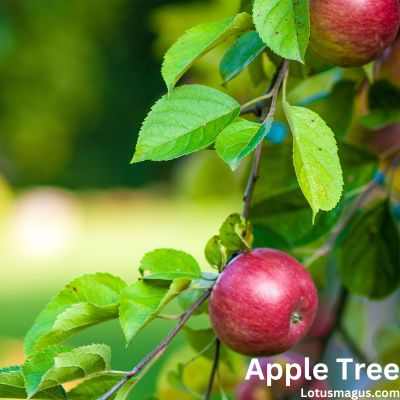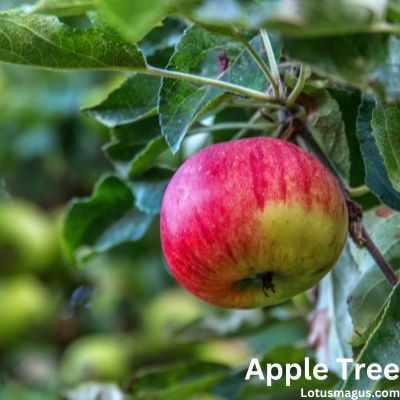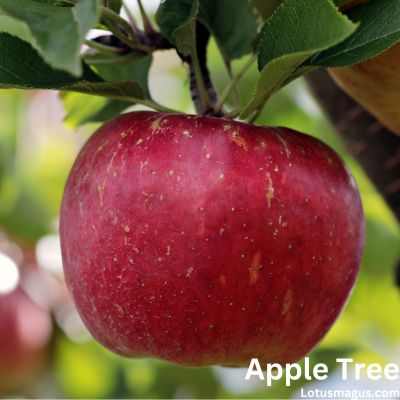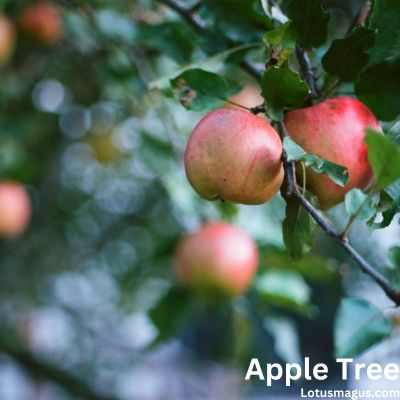If you have an apple tree, you should know how to prune it correctly to keep it healthy and productive. Winter pruning is crucial for regulating the form and vigor of the apple tree, whilst summer pruning is advantageous for promoting fruiting and flowers. In this article, we’ll guide you through the best practices for pruning apple trees during the winter months.
Why prune apple trees in winter?
Pruning during the winter season is recommended for a few reasons:
The branching structure and any sick or injured limbs are first and foremost readily apparent without their leaves. This facilitates the pruner’s ability to recognize and eliminate any undesirable growth.
Second, the tree remains dormant throughout the winter, which means it is not actively growing or producing fruit. This is the best time to prune since it will put the tree under the least amount of stress and have no impact on fruit development.
In fact, by encouraging new growth and allowing for improved air circulation and sunshine penetration, winter trimming may actually be advantageous to the tree. The tree may concentrate its efforts on developing healthy new growth and fruit by cutting off dead, diseased, or crossing branches.
Table of Contents
Winter pruning should be carried out at least two weeks following the pruning cut, during a dry season. Wet environments may encourage the development of fungi and raise the risk of illness.
There are a few essential procedures to take while trimming apple trees in the winter. Then, get rid of the wood that is infected, damaged, and dead. Remove any branches that are crossing next, starting with the largest cuts. Lastly, to maximize sunshine and air circulation, reduce growth by around one-third of the growth from the previous year and maintain an open, centered crown.

When to prune apple trees in winter?
The best time to prune apple trees in winter is after the leaves have fallen off, and the tree is fully dormant. The tree won’t grow further till the weather warms up if you wait until this stage, assuring.
Winter pruning is essential because it gives cultivators a chance to observe the tree’s branching pattern and any sick, dead, or broken branches. Since it encourages new growth, improved air circulation, and sunshine penetration, it is also advantageous to the tree. Winter pruning poses less stress to the tree since it is not actively growing or bearing fruit. To avoid fungal development and illness, pruning must be done during a dry period of at least two weeks after the pruning cut.
Apple trees should be pruned in late winter, just before spring arrives, according to experts. The optimal time to trim apple trees is in the late winter when gardeners can clearly observe the tree’s structure. This makes it simpler to see and get rid of any unfavorable growth, enabling the tree to concentrate its efforts on developing healthy new growth and fruit.
Apple tree pruning in the winter offers a number of advantages, including as fostering new growth, enhancing air circulation and sunshine penetration, regulating the size and form of the tree, and encouraging wholesome fruit production. To guarantee that the tree is healthy and productive, it is crucial to use the right trimming methods and timing.
How to prune apple trees in winter?
Pruning apple trees in winter keeps them healthy and fruitful. Winter pruning includes removing old, dead, or diseased wood, crossing branches, and thinning out congested regions. By reducing unwanted growth, the tree may focus on producing high-quality fruit. here are the steps to follow:
- Timing: Apple trees should be pruned during their dormant season, which is normally from late December to early March. The tree is less susceptible to pests and diseases at this time, and pruning wounds heal more rapidly. Also, it’s crucial to choose a dry day to prune since moisture might encourage the development of fungi.
- Equipment: You will need a pruning saw, loppers, and a nice set of sharp pruning shears. To prevent hurting the tree, make sure your equipment is well-kept and sharp.
- Take away the Three Ds: Start by getting rid of the wood that is dead, damaged, and infected. This applies to any branches that are split, cracked, or damaged as well as any branches that exhibit disease or insect infestation symptoms. Trim these branches to the beginning of the healthy wood.
- Crossing Branches Should Be Removed: Keep an eye out for any branches that are crossing or rubbing against one another as they may lead to damage and illness. Cut back to the main trunk or a lateral branch before totally removing the weaker of the two branches.
- Make the most drastic cuts First: To begin a bigger cut, such as the removal of a huge branch, make an undercut on the branch’s underside approximately a foot away from the trunk. Next make a second incision about an inch further out on the branch’s upper side. By doing this, you’ll stop the branch’s weight from shredding the bark as you make the last cut.
- Reduce Growth: Reduce the tree’s growth by around a third from the previous year in order to encourage new fruiting wood and maintain a manageable size. To induce new growth in the desired direction, prune back to an outward-facing bud.
- Keep the Crown Open: Apple trees should have an open-centered crown to let in the most sunshine and airflow. Take away any branches that are extending toward the tree’s heart and any water sprouts that emerge directly from the main stem.

Tips for pruning young apple trees
The dormant season, just before the start of spring growth, is the ideal time to trim a young apple tree. The following are some tips to help you prune young apple trees effectively.
- Locate the main stem or central leader of the tree. The tallest and straightest branch that emerges from the tree’s trunk should serve as the center leader. It should be trimmed, keeping the buds intact, to a height of about 30 inches above the ground. This will promote the development of lateral branches, which make up the framework of the tree.
- The lateral branches that will make up the tree’s structure should then be chosen. Leave branches that are wide-angled and spaced up the leader in a spiral pattern between 6 and 9 inches (trunk). Eliminate branches with limited angular spacing. The length of the remaining branches should also be cut in half by pruning.
- Cutting the leader around 12 to 15 inches above the top limb is crucial. This will promote side branch development from the uppermost bud and limit the tree’s height. Also, trim any lateral branches that emerge from the main leader at the same height to avoid competition between the branches and potential weakening of the crotch.
- It’s crucial to keep in mind that trimming young apple trees shouldn’t be done harshly. The tree should have an enough amount of foliage to promote fruit production and healthy development. Excessive trimming may cause development to be inhibited and the loss of several fruit buds.
Pruning apple trees in winter in the UK
In the UK, winter is often the best season for pruning apple trees since the trees are dormant and the lack of leaves makes it simpler to view the tree’s structure. The tree may remain productive, healthy, and well-shaped with the aid of pruning. In the UK, you may prune apple trees in the winter as follows:
- As well as any branches that are crossing or rubbing against one another, remove any dead or diseased wood.
- To encourage fruit production, prune any branches that are growing too quickly or that are becoming too long.
- To urge the branch to develop outward rather than inward, prune to an outward-facing bud or shoot.
- In order to avoid stressing the tree and reducing fruit output, never cut more than one-third of the tree’s branches in a single year.

Pruning apple trees in winter in Australia
In Australia, late winter or early spring, just before the trees start to grow again, is the ideal time to trim apple trees. In the majority of the nation, this occurs generally around July or August. With a few exceptions, trimming apple trees in Australia and the UK are similar:
- Apple trees should not be pruned in Australia during the warmest months of the year since this might stress the tree and increase its susceptibility to disease.
- The many apple tree kinds produced in Australia should be taken into consideration while pruning since some may call for significantly different methods.
- Similar to UK pruning, it’s crucial to trim back any branches that are growing too aggressively or becoming too long as well as any dead or diseased wood.
- Similar to this, it’s critical to prune in Australia to an outward-facing bud or shoot to promote branch outgrowth.
Generally, apple tree trimming is crucial for preserving their health and production. Although there are a few variances depending on environment and tree species, the methods employed in the UK and Australia are relatively similar.

Pruning apple trees in the Pacific Northwest:
Here are some general tips for pruning apple trees in the Pacific Northwest:
- Apple trees should be pruned in late winter or early spring, just when new growth is starting. Often, this occurs in February or March.
- Take out any branches that are sick, dead, or damaged. They have the potential to harbor illness and pests.
- To promote proper airflow and sunshine penetration, thin off the branches. Both disease prevention and fruit production will benefit from this.
- Any branches that are extending too far or growing too quickly should be pruned. This will encourage fruit production and maintain the tree’s equilibrium.
- To urge the branch to develop outward rather than inward, prune to an outward-facing bud or shoot.
- In order to avoid stressing the tree and reducing fruit output, never cut more than one-third of the tree’s branches in a single year.
- Take into account the kind of apple tree you are trimming. Pruning methods may need to be somewhat modified according on the variety.
In general, apple tree trimming in the Pacific Northwest is comparable to pruning in other locations, with an emphasis on fostering excellent air circulation and sunshine penetration to combat disease and foster fruit production.
Winter pruning espalier apple trees
Every garden would benefit from espalier apple trees since they offer beauty and fruit yield. It’s crucial to understand when and how to prune them, however, to make sure they continue to flourish and provide high-quality fruit. Apple trees are best pruned in the winter when they are dormant and more tolerant of the operation.
Any dead or damaged timber as well as any branches that are crossing must be removed during winter trimming. Fruit production is aided by this by increasing air circulation and sunshine penetration. Also, the tree may be shaped and kept at the proper height and breadth by trimming throughout the winter. To preserve their distinctive shape and keep them trained against their supporting framework, espalier apple trees should be clipped.
Espalier apple trees need to be pruned twice, once in the winter and once in the summer. The primary goal of this trimming is to get rid of any extra growth that may have developed in the spring and early summer. By summer pruning, you may boost fruit output by refocusing the tree’s energy on its fruiting spurs.
It’s crucial to adhere to certain fundamental guidelines when trimming apple trees grown in espaliers. First, to make clean cuts and stop the spread of illness, always use sharp, clean pruning tools. Second, to promote new development, make incisions immediately above a well-placed dormant bud. Finally, to reduce stress on the tree, avoid eliminating more than one-third of its growth in a single year.
When is it too late to prune fruit trees
Fruit trees should be pruned in the late winter or early spring while they are dormant. This is done to ensure that cutting won’t probably have a bad effect on the trees’ health and ability to withstand the winter. Even if heavy pruning at this time may weaken the tree, it is still possible to do it in late July or early August.
Fruit trees can withstand the pruning process, and late winter is an excellent time to prune them since it makes it simpler to see the tree’s structure. Trimming during this time may also assist in preventing the spread of disease since the tree’s wounds have more time to heal before the growth season.
Cuts should be made just above a latent bud that is in a suitable place and using clean, sharp equipment when pruning fruit trees. It is also essential to avoid removing more than one-third of the tree’s growth in a single year in order to prevent straining the tree.
Fruit trees may be trimmed at any time of year, although late winter and early spring are the optimum times. For instance, it is still possible to prune fruit trees in the early spring, but doing so might harm the tree’s ability to blossom and provide fruit.
Conclusion
Maintaining apple trees’ form and vitality, encouraging new growth, and enhancing their general health all depend on winter pruning. You can make sure that your apple tree is fruitful and healthy for many years by using the advice provided in this article.
FAQs
- When is the best time to prune apple trees in winter?
- When apple trees are entirely dormant in the winter, usually between late November and early March, that is the optimal time to trim them.
- Why is winter pruning important for apple trees?
- The general health of the tree is improved by winter pruning, which reduces the size and form of the tree, promotes new growth, and eliminates any diseased, damaged, or dead wood.
- How do you prune young apple trees?
- Focus on building a solid foundation when trimming young apple trees by eliminating any competing shoots and choosing four to five major branches to establish the tree’s structure.
- Can pruning apple trees be done in the fall?
- Apple trees may produce fresh new branches that aren’t hardy enough to resist cold weather if they are pruned in the autumn. Pruning a tree is best done after the leaves have dropped and the tree has reached complete dormancy.
- How do you make clean cuts when pruning apple trees?
- Use clean, sharp tools for trimming apple trees, and try to cut slightly above a healthy bud to ensure a clean cut. This will promote springtime development and stop the bark from being torn or damaged.
Related Posts:
Apple Tree Branches Growing Straight Up: How to Max Fruiting
When to Cut Back Hydrangeas for Winter : A Comprehensive Guide
© 2024 Lotusmagus.com. All rights reserved. This content is protected by copyright. Visit Lotusmagus.com for more information.
